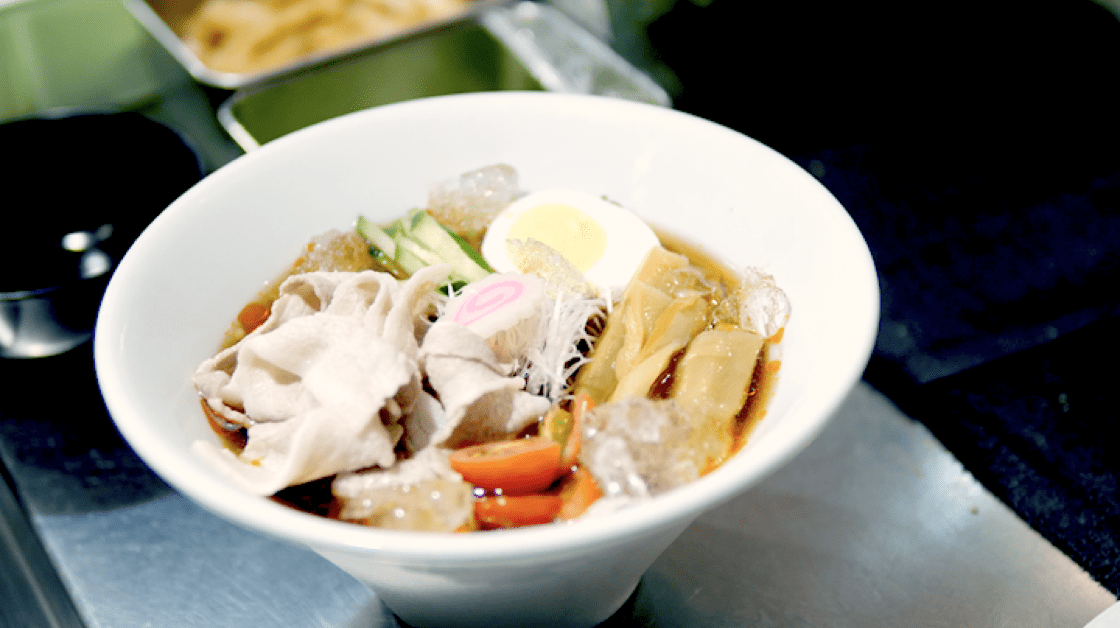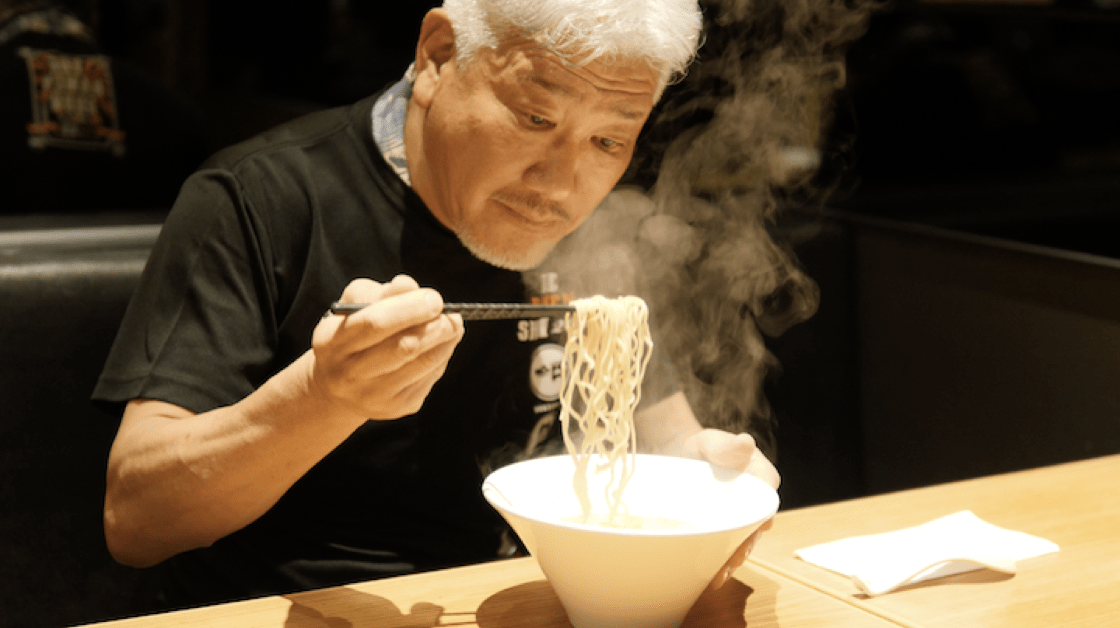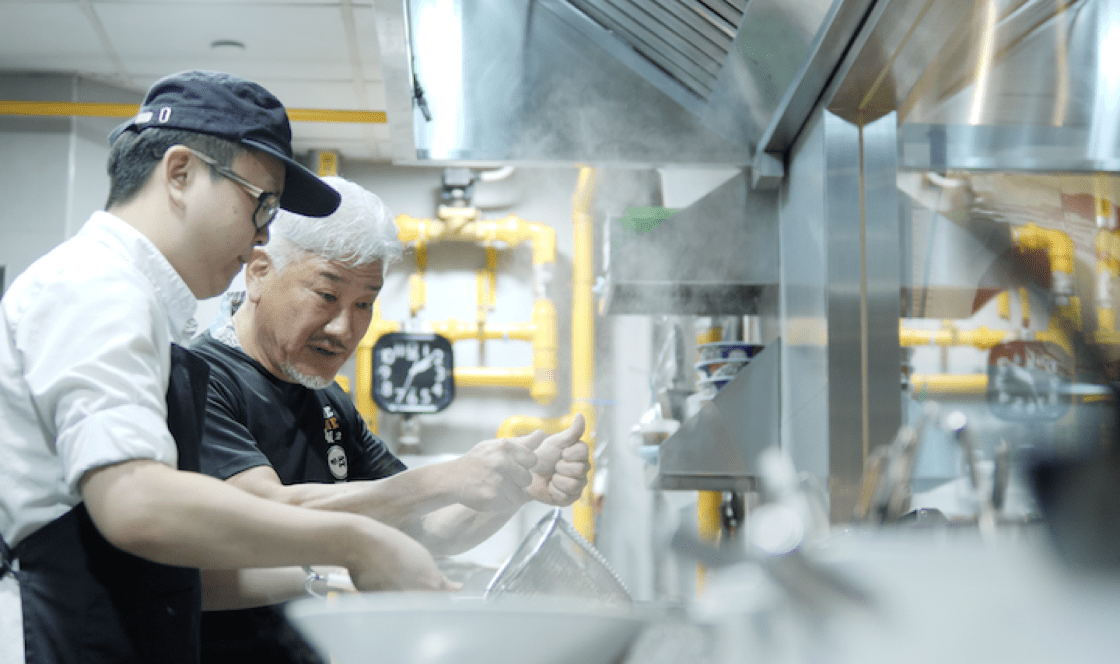You can learn many things just from observing Shigemi Kawahara, the founder of IPPUDO Ramen, at the table before his bowl of ramen.
He tilts his head slightly towards the steaming bowl and gently closes his eyes, his hands clasped as if in prayer.
It may have been for just a mere minute or two, but there is so much gentleness and calm in these moments.
When he opens his eyes again, he says in Japanese: “Itadakimasu”, which means “I humbly receive”. And then he tucks in heartily, slurping up these slippery yellow strands.

Ask him about those moments when he has his eyes closed and the 70-year-old chef replies: “In Japan, before eating, we address those who have guided us, so my father, mother and those before them, like my grandparents. Then there’s my wife’s parents, my siblings, my children, my fellow colleagues working with me. I say thank you to them, then I start eating. This has been my routine.”
Kawahara, better known as “Ramen King”, opened the first IPPUDO outlet back in 1985 in Daimyo, Chuo-ku, Fukuoka. Built on the foundations of a hearty comforting bowl of artisan Hakata Tonkotsu ramen, the brand has grown from strength to strength over the years, serving more than 70,000 customers globally each day in the 175 restaurants worldwide. Just in Japan alone, IPPUDO has over 89 outlets. The brand also achieved critical acclaim around the world with more than 86 international stores and flagship ramen restaurants in cities such as New York, Paris, Hong Kong and London. IPPUDO’s outposts in New York and Hong Kong had also been listed in those countries’ respective MICHELIN Guides.

But ask him about his ramen journey and he will tell you it started in a bar when he was in his 20s.
“Before I started work in ramen, I was working in a bar, and after work, I’ll drink and eat ramen at 3am every day.”
The ramen was good but he was perturbed that he would not see “cool-looking guys or cute girls” in a ramen joint.
“My bar always had cool-looking people. Why was it that ramen shops didn't have any cool-looking people? Everyone said they loved ramen.”
He soon found out that while ramen was good, the shops that served it were dirty and smelly.
“The ramen cooks looked scary and ladies would not go there. This was 35 years ago. So there was no place to eat ramen. None of the ramen people were thinking about this, none was innovative,” he recalls.

The idea about making ramen trendy took root. For Kawahara, it was not as simple as cooking a bowl of ramen, but designing the ramen experience and introducing it as part of the Japanese food culture. He had a bigger vision for ramen — he wanted to share it with the world as, to him, it was part of popular culture.
“I wanted to innovate ramen. Nobody was looking out for a new style, but I had faith in finding a new way. I wanted to change the ramen industry. There hadn’t been young people because everyone was conservative. I wanted to bring about a change in that culture and be the winds of change.”
At that time, he knew only that but nothing about cooking ramen. He did, however, know how to cook and enjoyed it, as “there’s a heartwarming feeling about it and it helps to bring people together”.
Being the youngest of four sons, Kawahara was used to helping in the kitchen. In school, during home economics class, he once cooked miso soup, rice and rolled omelette, which impressed his teacher.

Recalling that incident, he became emotional and teared up, even though the camera was rolling. He explains: “As a kid, I was really happy to be praised like that.”
He embarked on a ramen journey in search of his own ramen taste.
“I wanted to customise my own flavour and I tried to make the perfect bowl of ramen, so I spent a year searching for the flavours I could call my own. IPPUDO is the name of a band I like. When I opened the restaurant, many people came, as it was remarkably different from the past.”
Inspiration Abounds
For Kawahara, ingredients or flavours are not always what inspires him to create a new ramen.
He explains: “I get ideas from books, music and movies. I am always thinking of what is new and interesting, what is innovative and if it will make people happy. What motivates me is passion.”
According to him, there’s a story behind every bowl of ramen in IPPUDO. Going deeper into his creative process, he says: “We are not musicians or artists, but I can express myself, although momentarily, through a bowl of ramen. I feel that a bowl of ramen is where all stories begin. There are things that can be conveyed through one bowl of ramen and herein lies the challenge for me. I just have to try.”

At this point, he gets philosophical and remarks: “You only get to live once — you are born, you live, you die. Anyone, everyone, including me. But when I am alive, it is most important for me to have fulfilled and lived in my life.
“Though it may be tough, but I don’t worry about it. I will just do my best with a fighting spirit and stand strong.”
He concludes: “Ramen is the foundation of my happiness. I can’t be the top ramen chef but I aim to set new standards. I change the world using ramen. Yes, I can and I am not alone in this. I can make ramen for people and bring them happiness.”












